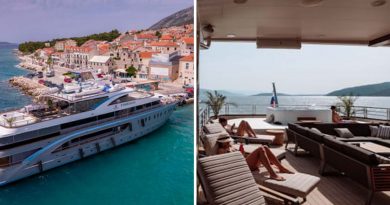Most luxurious hotels: What staff can’t do when serving the ‘upper class’ – ‘is not nice’
Owner creates luxury living room for his dachshunds
We use your sign-up to provide content in ways you’ve consented to and to improve our understanding of you. This may include adverts from us and 3rd parties based on our understanding. You can unsubscribe at any time. More info
In the latest episode, Monica and Giles travel to Madeira, Portugal, to work in one of Europe’s leading hotels: Reid’s Palace.
The Reid’s Palace is the island’s first high-class hotel.
The luxury hotel welcomes high society guests from across Europe every year.
Back in 1920, it was promoted as a “no rain and no dust” spot to spend the holidays.
A place where Britons could enjoy quality time away from the bad weather and pollution.

Madeira didn’t have an airport until 1960 and it used to take Britons three to four days to get there.
The Reid’s hosted politicians and royalty.
From Prince George, Duke of Kent, to Queen Victoria’s granddaughter Marie Louise or Prince Edward, Duke of Windsor and Churchill.
But how is a luxurious hotel supposed to treat its guests?
A member of the staff explained how food should always be served in the restaurant: “Always in front [of the guest] and you have eye contact.
“It’s not nice to be having dinner talking like this [looking up].
“The service is personal yet not formal.

“We need to give an explanation of the dish to the guest.”
But it didn’t always work this way, as in the early days, the aristocratic families used to bring their own service.
Until 1990 the hotel’s staff treated guests very differently.
They had to follow strict rules, they couldn’t look at the guests directly or ask questions.

The Belmond Reid’s Palace is located to the west of Funchal Bay in Madeira.
The hotel opened in 1891.
Its complex includes more than 40,000 square meters of space designed as a subtropical botanical garden.
Monica and Giles agreed this was a hotel “for the upper class” and still remains a “very classy” holiday option.
Source: Read Full Article



